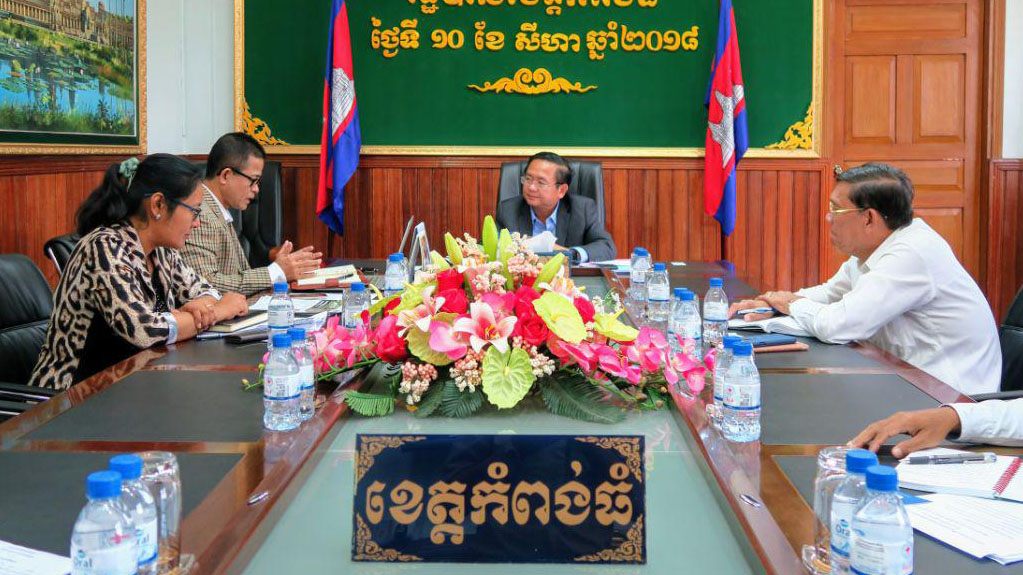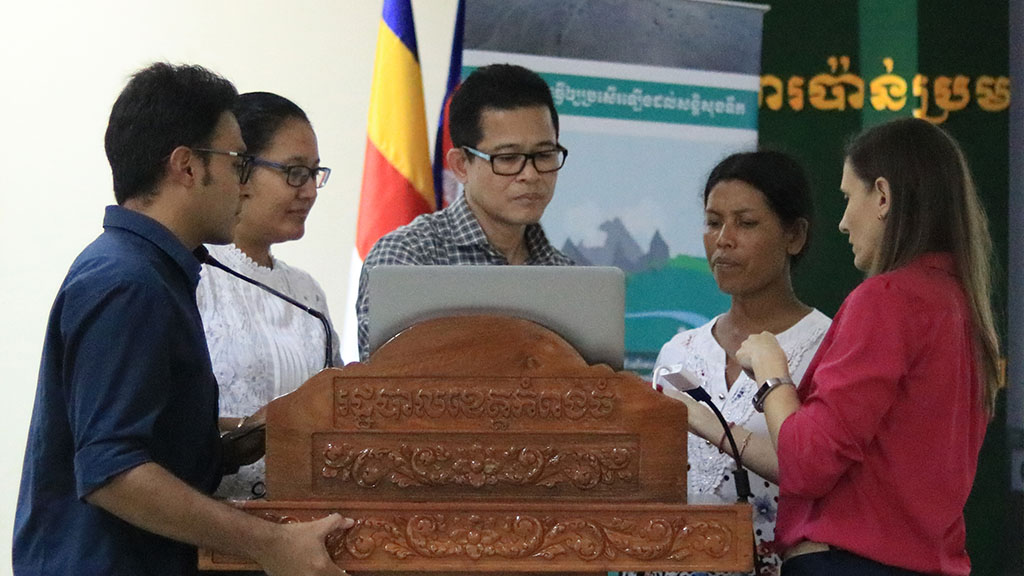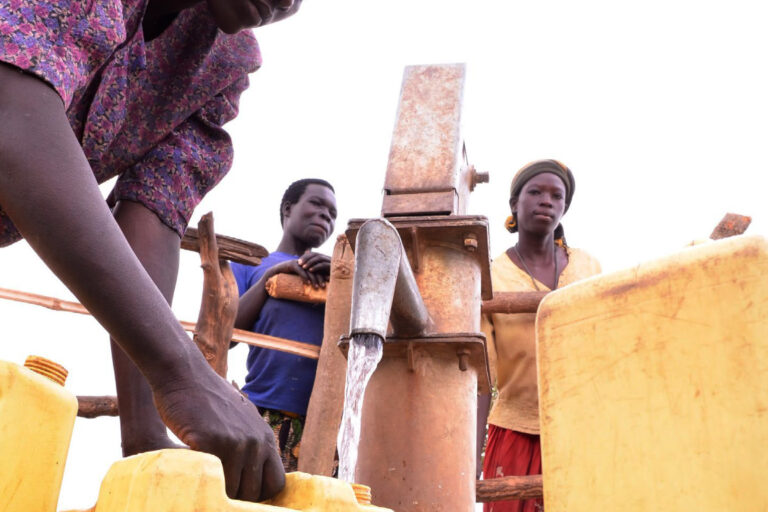
Modeling Better Water Management
SWP and SEI train Cambodian students, researchers and officials on a new method of water resource planning.
The Sustainable Water Partnership (SWP) has trained 15 Cambodian representatives from national and provincial departments, research institutes, technical organizations and universities on an innovative new water modeling tool.
In September, SWP and consortium partner Stockholm Environment Institute (SEI) provided technical training on the Water Evaluation and Planning (WEAP) system, a software tool developed by SEI for integrated water resource planning. WEAP allows users to model the natural hydrologic system, as well as infrastructure, development and operations, in order to predict the impact of various changes within the basin, from climate change to new reservoir construction. The software provides a comprehensive, flexible and user-friendly framework for planning and policy analysis.

In developing the two-day training course, SEI targeted Cambodian officials and students with experience and knowledge in watershed and resource management. Working from a model of the Stung Chinit watershed, participants learned to use WEAP to assess impacts of climate change, development and other key uncertainties. Trainers also discussed how the software can model the effects of various response strategies.At the end of the training, each participant completed a knowledge self-evaluation and a short survey to collect feedback on their experiences. Participants said they had gained an increased knowledge of how to apply the software in their professions, whether for decision-making, planning or research.
“WEAP model training is important and useful, especially for my department, which is focusing on water and agriculture,” said Y Puthealy, an official from the Tonle Sap Authority. “After the training, I have already applied this model in my work on rain water and climate analysis. I plan to continue use it in an upcoming project related to wetland and watershed management.”

Overall, participants responded positively to the curriculum and training method.A handful of outstanding participants expressed interest in collaborating with SWP and SEI in the future on the Stung Chinit WEAP model.
“I am interested to learn more detail about WEAP, especially WEAP practices in the Stung Chinit watershed, so that I can see and learn about future development,” said Nut Nareth, a professor at Cambodia’s Royal University of Agriculture. “I believe that WEAP can predict long-term water availability, drought or flood in the Stung Chinit at least ten to 20 years forward.”
Related Projects

